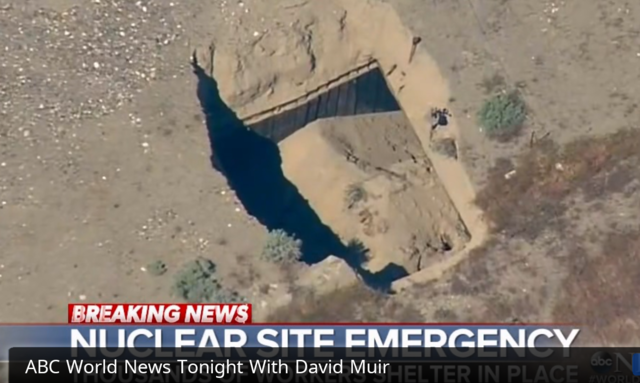For the past two days I have been posting about the problems at Hanford with respect to the collapse of the soil above a railroad tunnel filled with radioactive railway cars and contaminated equipment. There have been a flurry of stories since the cave-in two days ago and I thought that I would add some additional information to my coverage of the story.
Prior to May of 2016, the U.S. DoE had been under a court imposed deadline to remove the wastes from the “PUREX tunnels” by 2024. In May of 2016, the DoE was granted an extension of the deadline from 2024 to 2042 over the objection of Hearts of America Northwest, Native American Tribes with Treaty Rights impacted by Hanford’s contamination, the Hanford Advisory Board and other concerned organizations and individuals. These opponents fear that the tunnels could be collapsed by an earthquake and expel radioactive contamination into the environment.
On Wednesday, workers began filling the hole by the PUREX. It took about fifty truck loads of soil to fill the hole according to the news story. An average dump truck carries about ten cubic yards of dirt. So fifty truck loads would be about five hundred cubic yards.
The early reports said that the hole was twenty feet by twenty feet and four feet deep. This would represent about sixty cubic yards of dirty. It would take about six average dump truck loads at ten cubic yards to fill such a hole. This does not make sense because the dirt had to go into the tunnel. As you can see from the picture at the bottom of this post, the walls of the tunnel are exposed. The dirt over the ceiling of the tunnel is eight feet deep. A hole four feet deep would not have exposed the sides of the tunnel. The numbers just don’t add up.
A flat car is about four feet high. The tunnel is about twenty feet high and twenty feet wide. A hole in the top of the tunnel twenty feet long all the way across the width of the tunnel would accept the amount of soil covering the tunnel which would spread out over and beside the railroad cars and flow up and down the tunnel past the edge of the tunnel which matches what is shown in the picture.
About one hundred and fifty cubic yards of dirt would have filled the hole shown in the picture but the workers put in over five hundred cubic yards. This means that much of the dirt had to flow into the tunnel beyond the area where the ceiling collapsed which would have displaced air contaminated with radioactive materials into the outer atmosphere.
Official reports keep saying that no radiation was released following the collapse and that no worker was exposed to any radiation. This is difficult to square with the fact that the tunnel and its contents were so radioactive that one hour of exposure would be lethal and it appears that air from the tunnel reached the outside atmosphere. I would think that there would be radiation danger to the workers who were filling the hole at the very least. If the information from official sources about radiation hazards at Hanford is not true, it would not be the first time.
